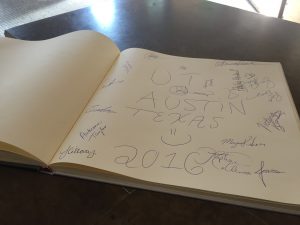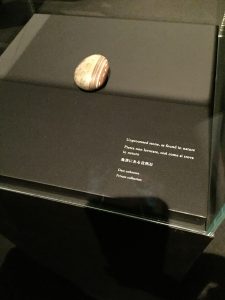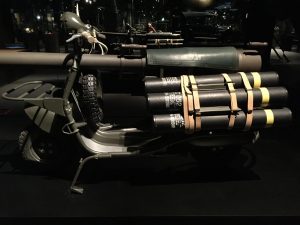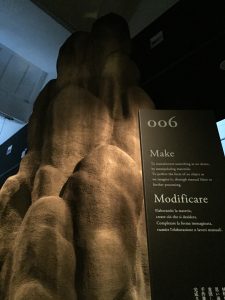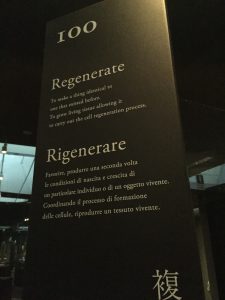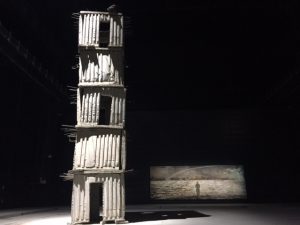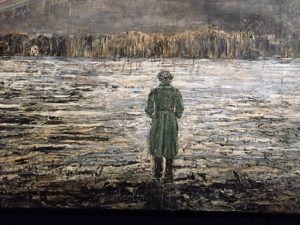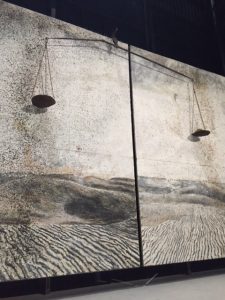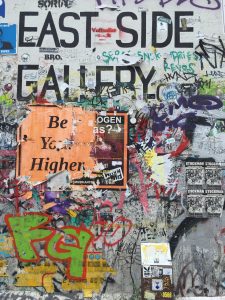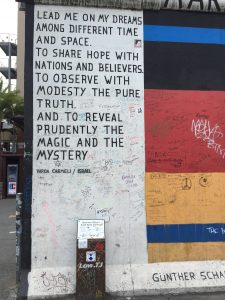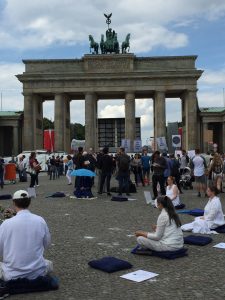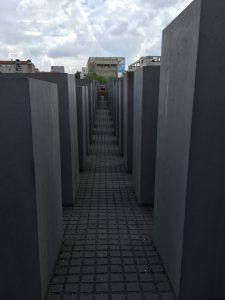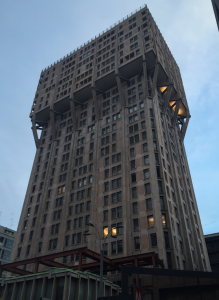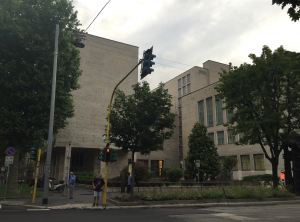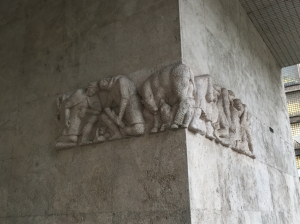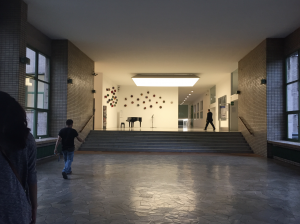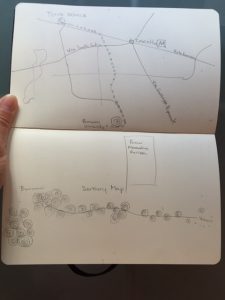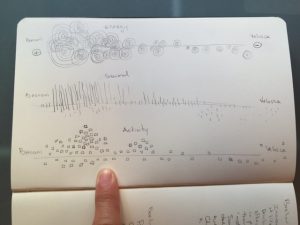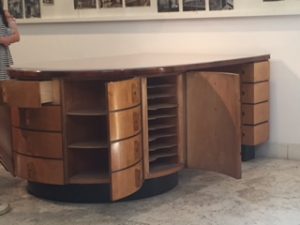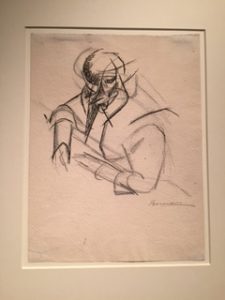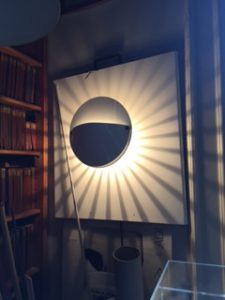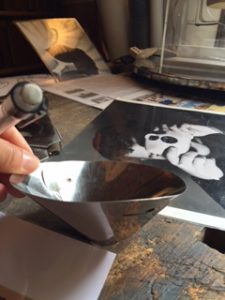
A moment of reflection, a bird’s eye-view of the city. A last review of Design in Milan. Milano, such a wonderful city, full of bravado, energy and kindness. This has been a whirlwind of an experience (a once in a lifetime opportunity that has changed my view on design) — where the past met the present and juxtaposed the future to create new forms of designing. Each element gave me a completely different perspective on Design … and life. Not only did we see graphic design, but we saw total design, which has fascinated me for wuite some time. Now I understand total design and comprehend the different modes of design. With the right foundation, not one way is right or wrong, but just different modes of making. It wasn’t just about thinking, but the act of making and creating your own practice. We were exposed to different modes of making. It wasn’t about what the designers learned and how they did the work, but it was that they did the work and discovered a variety of thoughts and execution of those ideas. It was how they interpreted complex ideas and turned them into simple, functionable objects and usable forms. Most designers believed in form follows function, but there were a couple of designers that created sculptures, as well and transformed those into functional objects. Overall, designers followed the”form follows function” concept. One designer that comes to mind that made beautiful objects that didn’t necessarily followed the form follows function concept was Phillippe Stark. Although, he’s not Italian, he did work for Alessi to create award winning objects. His juicer didn’t necessarily function all that well, but was a sculptural piece, which is still one of the most successful, selling artifact he designed for Alessi, which leads me to believe that Milan places design as a priority. Unlike, the United States, Milan respects and appreciates designers. Here, they allow for designers to take the time to conceptualize, to explore and to prototype. And then, prototype, again.
Alessi believes in the power of design to improve our lives. It is about how designers work and allowing them to explore their concepts at a reasonable pace. In Italy, they understand the importance of creativity. They understand that each designer has different modes of making and allow for those processes to evolve into something beautiful and functionable. Each designer had a practice and created each design in their own way without compromising their work. I noticed that each designer had a method of working, but they all … practiced, practiced, practiced. They didn’t become great designers simply by observing and thinking. They all discovered their methods of making and continued to practice until they created their own process. It was about how each designer worked and generated processes for themselves. Whether it took one month or one year to design an object, they created the right environment for themselves. This was possible because Italy supports (and still believes) on the importance of design.
Our experience started from the day we set foot in the city … We were rained on, delayed and held back for about an hour because the rain blocked the railway. Nature, (A tree) decided to intervene to give us a different experience of Milan. What a fascinating way to begin a design program. I was scared, thrilled and nervous of the unknown. But the nervousness quickly dissipated the minute we saw Kate and the wonderful Jessica.
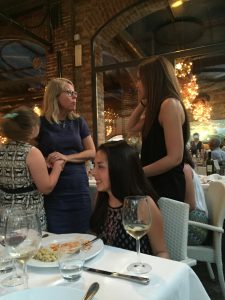
They made the most of the entire month; giving us a broad spread of work, styles and forms of design–from architecture, fashion, industrial and graphic design–to complete a full circle. All of the work we saw was inspiring. I can’t think of one designer that I didn’t like, but there were a few designers that stood out for me. They captivated and captured my spirit. They were Castiglioni (both father and daughter: Aquille and Monica), Vico, Sottsass, Lauda, Branzi and Carlo Scarpa. Although, I loved all the other other designers, these designers stood out to me because of their practice. Especially, Aquille Castiglioni, he was by far, in my opinion, the most eccentric designer followed by Vico. Neither one of them followed the typical design process. They discovered what they liked and continued exploring.
Castiglioni for example, played. He enjoyed the simplicity of life and observed anonymous objects to inspire his designs. Vico of the other hand, was a hard-working man. He didn’t follow the typical rules of design. He didn’t even draw most of his successful designs. He simply communicated his ideas and had others design them. He believed that if a designer could communicate his ideas over the phone, they were most successful … Because the idea was so strong, there was no need to over explain or draw. He was also an observer. His granddaughter shared a story of him going to a company, daily. To understand what they needed. It was unusual way of working for the company that hired him. They had never experienced such a designer. Most designers would just send ideas, drawings and sketches whereas Vico wanted to live in the space and communicate with others … just to spend time there and later verbally communicated his designs.
The next best things for me were the Carlo Scarpa cemetery, the print museum and workshop, the Fabrica and a nice surprise visiting Fondazione Prada and discovering that the old distillery was revived by none other than the OMA group lead by Rem Koolhass. One of my favorite architects. Again, although he’s not Italian, it was great seeing his work in Italy. Most of Koolhass designs are driven by connectivity and experience, in my opinion. He was able to combine the old with the new seamlessly, without disturbing the original structure of the distillery. He added such modern elements that it directed you to focus on the details. At first glance, the building looks completely modern, but when you look closer, you see the gaps bringing your attention to the old facade. Your eye is drawn by the modern, but it guides you to focus on the old. The intention was to highlight the beauty of the old forms.
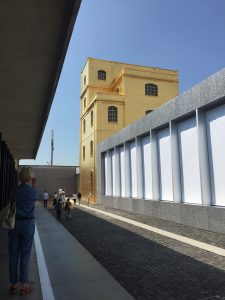
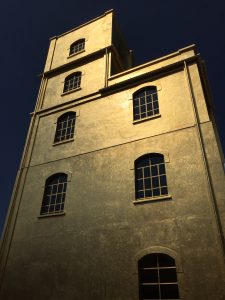

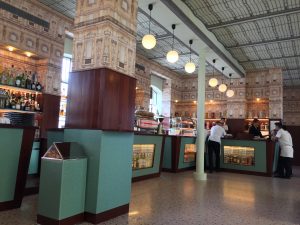
The interior design of the cafe “Bar Luce” was designed with Wes Anderson–to add a little cinema flare to the Fondazione.
Another wonderful surprise was Carlo Scarpa’s structures. I had never been exposed to this architect, but I have found yet another inspiration. Scarpa definitely focuses on the gaps in between by allowing you some breathing room from wall to ceiling to door. Every little detail is completely thought of, including the gaps in between.
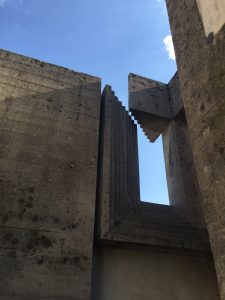
This image above is one of my favorite representation of Scarpa’s style. It is the untouched space (the gaps) that make his forms more spectacular.
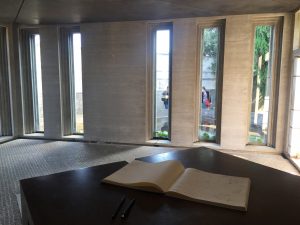
The image above represents the power of a meditative space through absence. We decided to sign the book and leave a bit of Texas happiness by signing the guest book.
